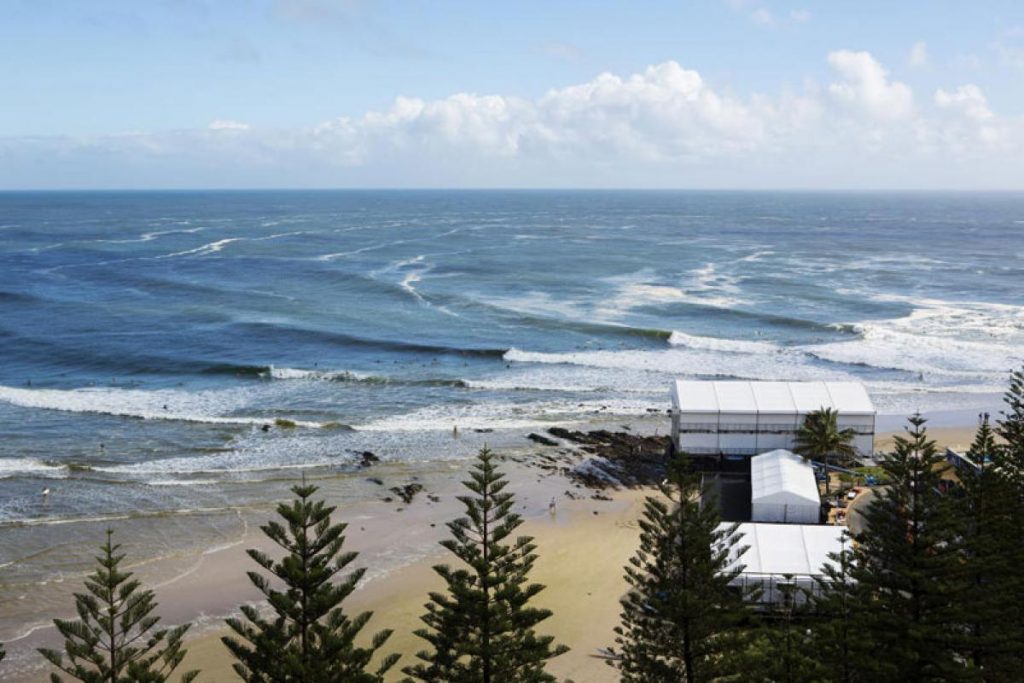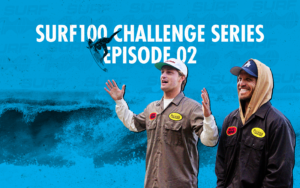Radioactive Wastewater From Fukushima’s Nuclear Power Plant Is Being Dumped In The Pacific Ocean
What does releasing 500 Olympic swimming pools of fission fondue mean for surfing?
It’s March 9, 2011. Kelly Slater is the current World Champion (his tenth) and has just beaten Taj Burrow in the opening event of the season, the Quikky Pro, Gold Coast with a 11.20 heat total. In coming months, he will face off with Owen Wright in three CT finals, winning two of them at Teahupo’o and Trestles, to become the cherished ‘K11y’ whose nick-namesake is branded on the soles of slippers.
Scrolling IG from the balcony of his Rainbow Bay complex, sipping pH 7+ agua between mad sensory payoffs at the Superbank, he probably didn’t have the foreboding sense the worst nuclear disaster since Chernobyl was just around the corner.

It’s March 11, 2011. A tsunami has struck Japan causing the Fukushima nuclear power plant to melt and release radioactive soup into the surrounding environment. The wave-rich beaches of the region close. 164,000 locals are displaced, thousands die from the associated stress, and words like ‘cesium-137’ trend on Google’s search engine.
12 years on and neither Kelly nor the Fukushima problem have gone away — today we’re focusing on the latter, cos there’s been some updates.
Over the next 17 days, the Japanese government began the controversial task of releasing 1.34 million tonnes (500 Olympic swimming pools) of treated but still slightly radioactive wastewater into the Pacific Ocean. The plan faces opposition in and outside Japan.
Here’s a breakdown of the controversy.
Following the Fukushima disaster, the plant operator, Tokyo Electric Power Company Holdings (TEPCO), took steps to limit the amount of groundwater and rainwater entering the reactor area. By using their Advanced Liquid Processing System (ALPS), they reduced the contaminated water to one-fifth of the initial amount. The ALPS reduces the amounts of more than 60 selected radionuclides to government-set releasable levels, except for tritium, which officials say is safe for humans if consumed in small amounts.
The ~1000 storage tanks containing ALPS-treated water are already filled to 98% of their 1.37 million-ton capacity. About 70% of the water held in the tanks still contains cesium, strontium, carbon-14 and other radionuclides exceeding government-set levels. “Wastewater will be re-treated until the concentrations meet those limits, then diluted by more than 100 times its volume of seawater before it is released. That will bring it way below international safety limits, but its radioactivity won’t be zero”, writes AP news.
The government and TEPCO say they need to empty the tanks and clear them from the plant complex to make room for the plant’s decommissioning and prevent accidental leaks of the tanks. The drop-point will be 1 kilometer (0.6 mile) off the coast. TEPCO plans to release 31,200 tons of treated water by the end of March 2024, which would empty only 10 tanks because of the continued production of wastewater at the plant. The release will be gradual and will continue for decades until the decommissioning of the plant is finished, TEPCO officials say.
So into the Pacific Ocean they go.
The Japanese government has already allocated 80 billion yen ($5.9 billion USD) to support fisheries and seafood processing and combat potential reputation damage. Fukushima’s current catch is only about one-fifth its pre-disaster level due to a decline in the fishing population and smaller catch sizes. The head of the National Federation of Fisheries Cooperatives, Masanobu Sakamoto, said on Monday that “scientific safety and the sense of safety are different.” TEPCO has also promised to deal with reputational damage claims.
Trust in scientific authorities is largely what determines the perceived sense of safety. Japanese health and radiation specialist Shunichi Yamashita explains, “people are suffering from radiophobia” in his SPIEGEL interview. Adding “We know from Chernobyl that life expectancy of the evacuees dropped from 65 to 58 years — not because of cancer, but because of depression, alcoholism, and suicide. Relocation is not easy, the stress is very big. We must not only track those problems, but also treat them.”
Interestingly, there were no fatalities associated with the Fukushima nuclear power plant disaster that were attributed to radiological hazard, despite exposing tens of thousands of local residents within the 20-km exclusion zone. As of 27 February 2017, the Fukushima prefecture government counted 2,129 “disaster-related deaths” in the prefecture, mostly due to suicide, stress, and interruption of medical care.
What does it mean for surfing? Well it’s worth noting that surfers have already returned to the lineups in Fukushima, even with the plans going ahead to dump the waste material in the lineup. The 2020 Tokyo Olympics held at Tsurigasaki Surfing Beach, were held a little under four hours south via Suzuki Swift. Mick Fanning was within 50kms of the Fukushima plant during his Stab in the Dark in 2018.
Nic Bostrom, the acclaimed Swedish philosopher proposed in his 2019 paper, The Vulnerable World Hypothesis, “Is there a black ball in the urn of possible inventions?”. He writes, “One way of looking at human creativity is as a process of pulling balls out of a giant urn. The balls represent possible ideas, discoveries, technological inventions. Over the course of history, we have extracted a great many balls – mostly white (beneficial) but also various shades of gray (moderately harmful ones and mixed blessings)… What we haven’t extracted, so far, is a black ball: a technology that invariably or by default destroys the civilization that invents it.”
Yes, no black balls yet, but surfing in increasingly radioactive waters certainly feels… murky.














Comments
Comments are a Stab Premium feature. Gotta join to talk shop.
Already a member? Sign In
Want to join? Sign Up